So, ever since we got the RV, I have been wondering what we were going to do with the roof. There is just SO MUCH SPACE up there, that something has to be done with it! So we went to the drawing board. (And bear with me – this turned out to be a longer post than I thought. I listed all the products we used and have links to them in case you wanted to do a similar thing to your RV roof. Maybe it will be helpful!)
Here were the ideas:
- Solar panels. Solar power was definitely a priority for the roof. We had to make sure there was room for that.
- Bikes. Originally I wanted to put the bikes on the back of the RV – for the sake of the limited MPG that we have! Then the plan changed and we decided to get a motorcycle to cruise around on (I know, it’s a little crazy). That meant the bikes had to go on the roof. I won’t really talk about our bike rack set up, but if you want, you can find a detailed post on how we hooked that up here.
- A bullet box. External storage for all the gear that we wouldn’t need on the daily – climbing ropes, slacklines, tent, sleeping bags etc. (We will do a detailed gear post in the future! Stay tuned!)
- And then lastly I wanted to get a big pair of longhorns to tie on the front end of the roof! Okay, just kidding… but kind of serious. Wouldn’t that look cool?
So we set out to fit all of this on the roof! But first, I wanted to make sure that our roof was in good shape, before I started mounting all of this stuff on to it!
Check out these pictures I snapped of the status before we started the roof duty project:
(Looking towards the front)
(looking towards the back)
Pretty grimy, huh? But also, kind of beautiful.
Okay, like I have said before, I have felt a little inadequate when it comes to making these “big decisions” concerning RV renovations. I am a noob for sure. But, with a lot of confidence in my ever expanding University of YouTube education, I went for it.
I did a lot of research as to what material would be good to coat the roof with. It came down to two different product for me – Liquid Rubber EPDM Roof Coating and Herculiner Bed Liner Kit. There are pros and cons to both. Ultimately, the Herculiner won out. Liquid Rubber is for sure the “industry standard” as far as RV roofs go, but the fact that our cousin (shout out to Chase Carver!) had a can of the gray Herculiner (Liquid Rubber only comes in white, and it would be cool to match the rest of the RV, right?) is why we ultimately went that route.
But before that, we had a lot to do with the prep. Oh how I love paint prep (see A Naked Vie). I scraped all the crap off (and there was a LOT). I also scrubbed with a this stuff Trisodium Phosphate (TSP) that is a really gnarly cleaner to use before you paint. It worked REALLY WELL. In fact it worked so well, I used it just the other day to mop the old, gnarly kitchen floor in our apartment too – it lifted some seriously old grime! This stuff ROCKS.
Anyways, check out the after cleaning photo:
After cleaning I prepped what I thought would be “problem areas” like along the edges, along the seams and around the sky lights. I used some spray on sealant called Rust-Oleum Leak Seal. It is a clear, flexible rubber sealant. I just figured we would double down in these spots. I also hit it with some regular gray primer.
Then I laid down the Herculiner. The big deal with this is mixing it REALLY WELL. It’s important to keep the beads, or the grippy part, evenly distributed as you apply this stuff.
Unfortunately, I only took pictures of the blank roof after the first coat! I know, I blew it. There will be some better pictures when we post about our solar set up.
(looking towards the front)
(looking towards the back)
Anyways, I hope this was helpful. It is kind of a long, and somewhat boring, post. But maybe it will be helpful for someone! If you have questions, feel free to comment or email me! And get ready for the solar set up on our next post!

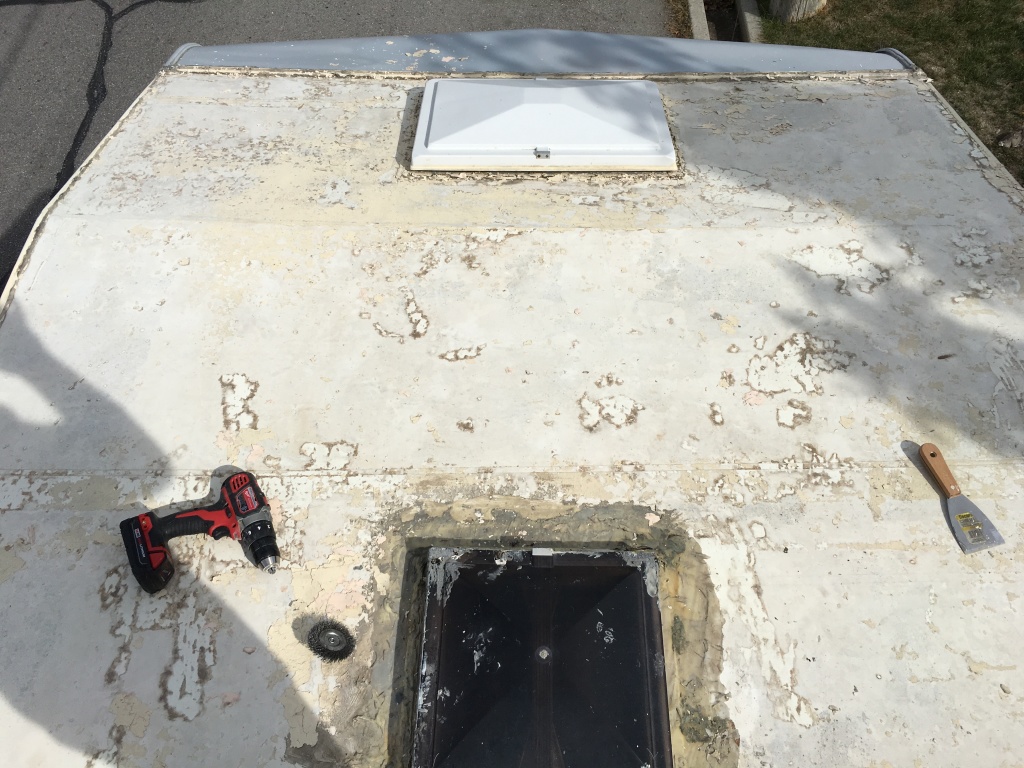
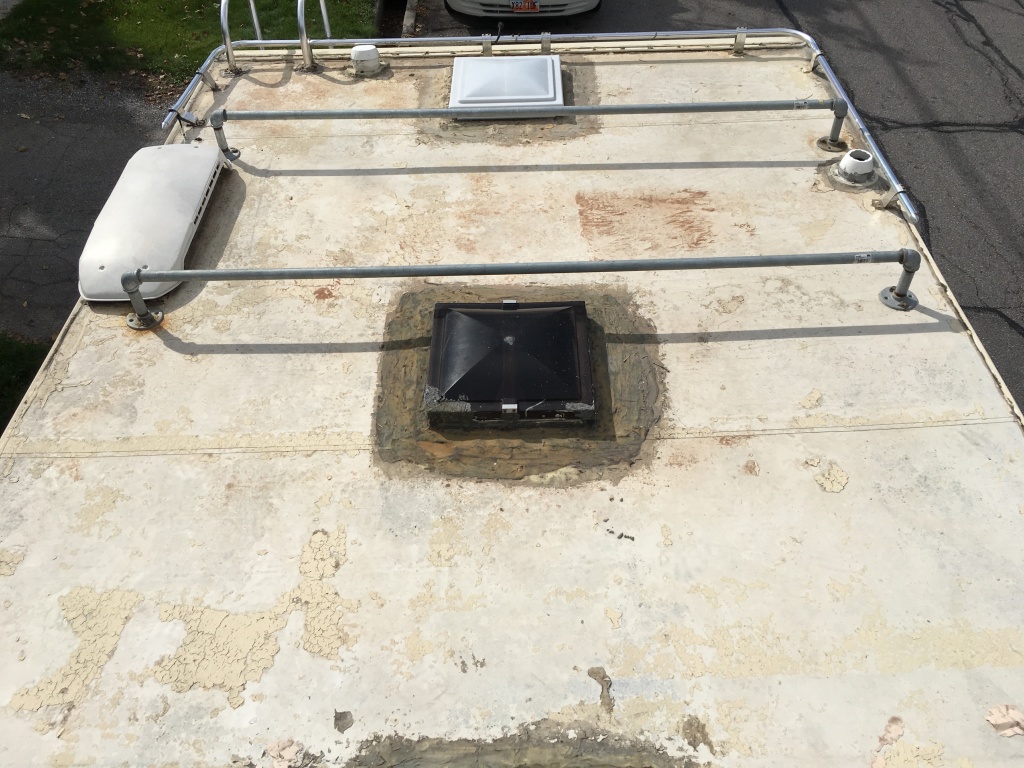
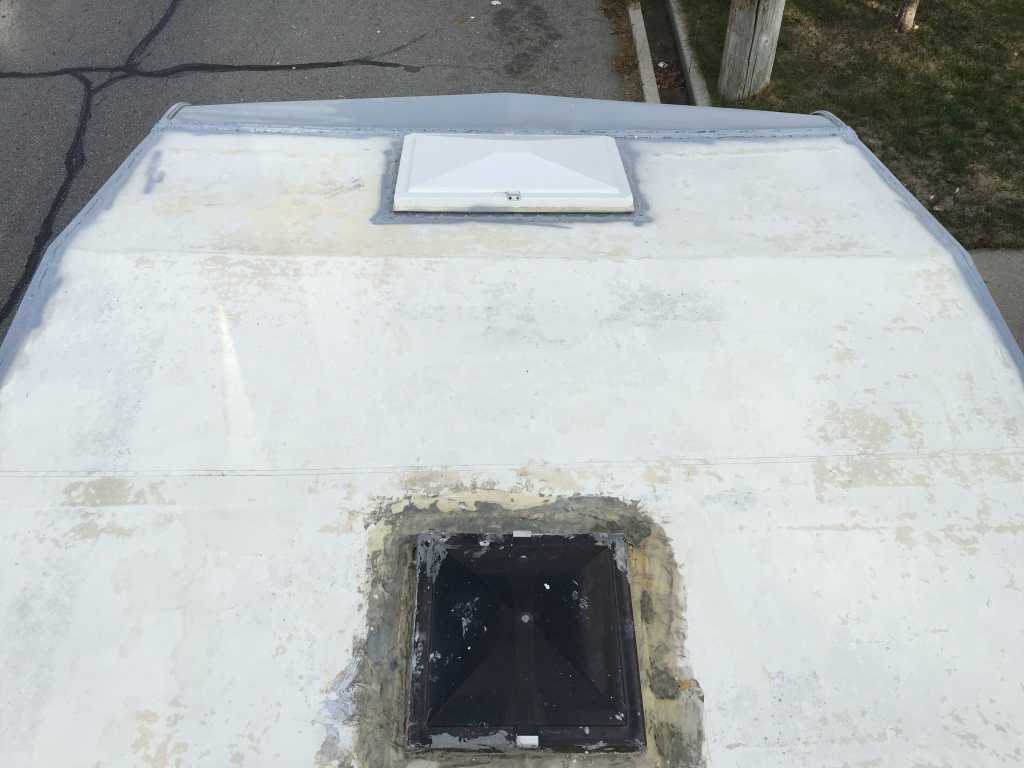
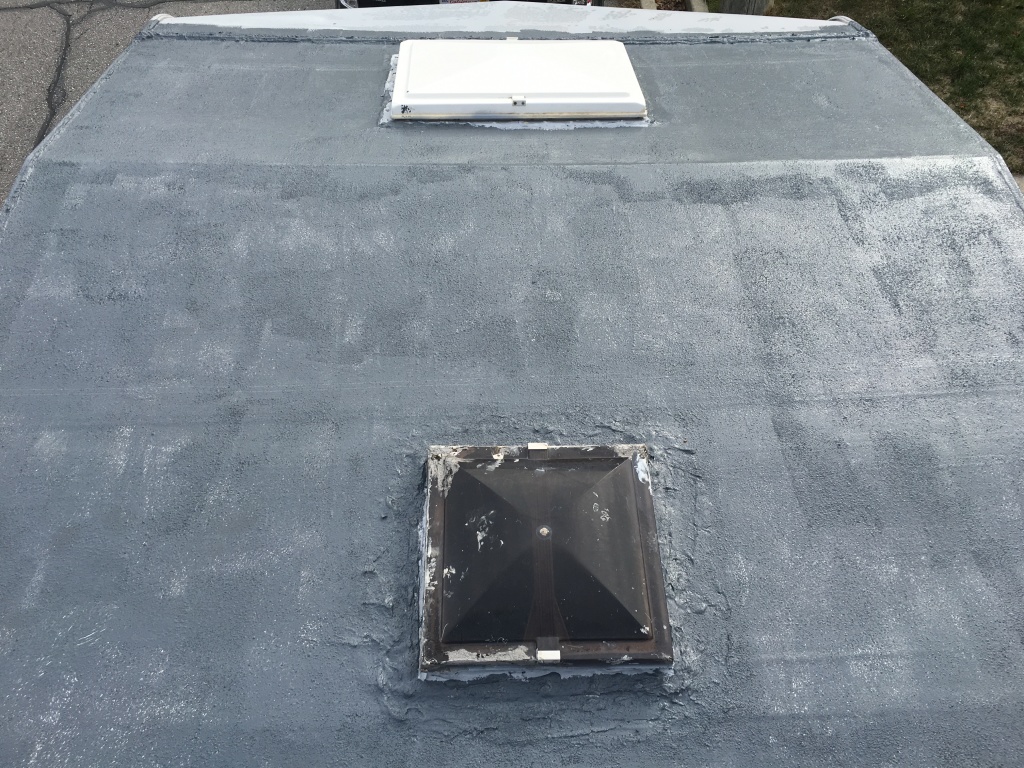
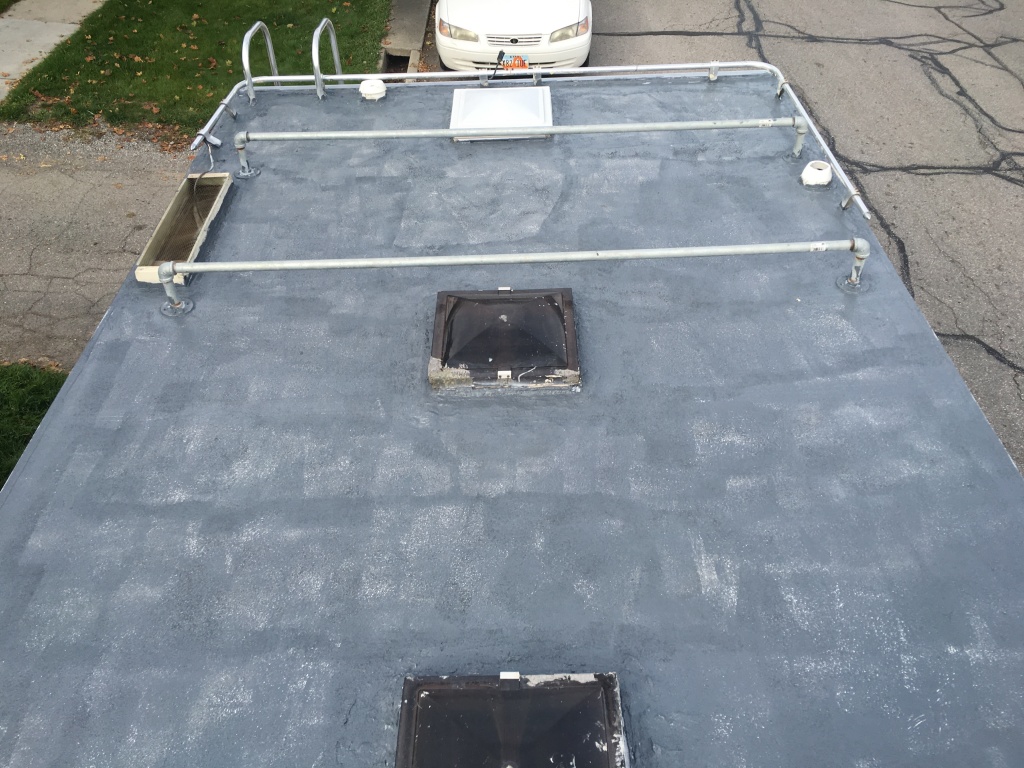
Installing solar panels on the RV is a great idea. Solar panels, although expensive, provide free energy source after installation. At times when you’re boondocking, solar panels can turn your RV into an independent motor home.